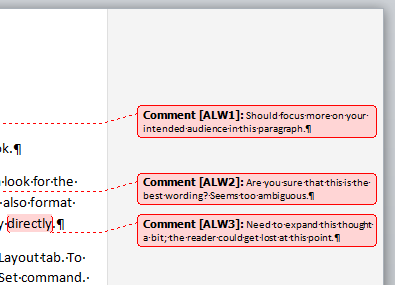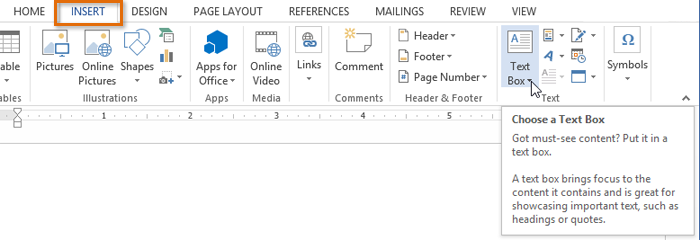
Use the Line property to return the LineFormat object, which contains properties and methods for formatting lines and arrows. The Shadow property returns the ShadowFormat object, which you use to format a shadow. Use the Fill property to return the FillFormat object, which contains all the properties and methods for formatting the fill of a closed shape. If the LockAnchor property for the shape is set to True, you cannot drag the anchor from its position on the page. The shape's RelativeHorizontalPosition and RelativeVerticalPosition properties determine whether the position is measured from the anchoring paragraph, the column that contains the anchoring paragraph, the margin, or the edge of the page. The shape's Top and Left properties determine its vertical and horizontal positions. You can view the anchor itself by setting the ShowObjectAnchors property to True. The shape will always remain on the same page as its anchor. A shape is anchored to the beginning of the first paragraph that contains the anchoring range. After a group has been formed, you can work with the group the same way you work with any other shape.Įvery Shape object is anchored to a range of text. Use the Group or Regroup method to group a range of shapes and return a single Shape object that represents the newly formed group. Use GroupItems ( index), where index is the shape name or the index number within the group, to return a Shape object that represents a single shape in a grouped shape. The following example adds a rectangle to the active document. To add a Shape object to the collection of shapes for the specified document and return a Shape object that represents the newly created shape, use one of the following methods of the Shapes collection: AddCallout, AddCurve, AddLabel, AddLine, AddOleControl, AddOleObject, AddPolyline, AddShape, AddTextbox, AddTextEffect, or BuildFreeForm. The following example sets the fill for all the shapes in the selection, assuming that the selection contains at least one shape. The following example sets the fill for the first shape in the selection, assuming that the selection contains at least one shape. Use ShapeRange ( index), where index is the name or the index number, to return a Shape object that represents a shape within a selection. To give a shape a more meaningful name, set the Name property. For example, if you add three different shapes to a document, they might be named Rectangle 2, TextBox 3, and Oval 4.

ActiveDocument.Shapes("Rectangle 1").Flip msoFlipHorizontalĮach shape is assigned a default name when it is created. The following example horizontally flips the shape named Rectangle 1 on the active document. ActiveDocument.Shapes(1).Flip msoFlipHorizontal The following example horizontally flips shape one on the active document. Use Shapes ( index), where index is the name or the index number, to return a single Shape object. If you want to work with several shapes at the same time or with shapes within the selection, use a ShapeRange collection.


There are three objects that represent shapes: the Shapes collection, which represents all the shapes on a document the ShapeRange object, which represents a specified subset of the shapes on a document (for example, a ShapeRange object could represent shapes one and four on the document, or it could represent all the selected shapes on the document) and the Shape object, which represents a single shape on a document.

You can position the shape anywhere on the page that contains the anchor. RemarksĪ shape is always attached to an anchoring range. The Shape object is a member of the Shapes collection, which includes all the shapes in the main story of a document or in all the headers and footers of a document. Represents an object in the drawing layer, such as an AutoShape, freeform, OLE object, ActiveX control, or picture.


 0 kommentar(er)
0 kommentar(er)
